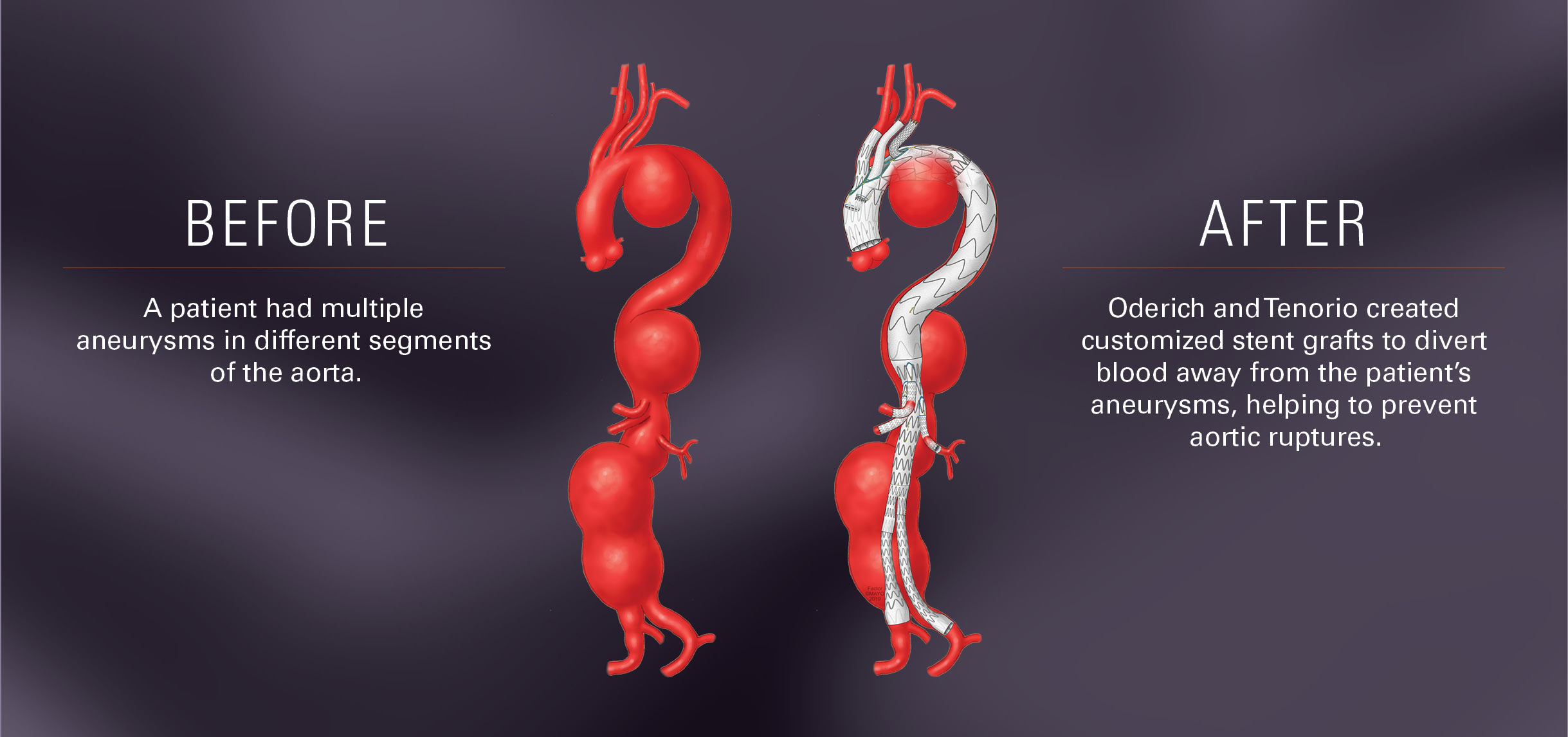
Beating in rhythm
Delivering life-changing cardiovascular care and innovation
The body’s cardiovascular system is vast, with sprawling labyrinths of arteries, capillaries, and veins long enough to wrap around the world more than twice. With a beating heart at its core, this complicated network winds its way through vital organs and tissues, delivering precious oxygen and nutrients. Despite its enormous size and complexity, new surgical techniques offer revolutionary ways to address life-threatening cardiovascular problems—sometimes through even the tiniest incisions.
For Emanuel J. Ramos Tenorio, MD, PhD, a postdoctoral research fellow in the Department of Cardiothoracic and Vascular Surgery at McGovern Medical School at UTHealth Houston, learning about minimally invasive surgery in medical school sparked a lifelong passion.
“The biggest drive for me in my career is to help people,” Tenorio says. “I was amazed when I learned how we can solve big cardiovascular issues through small incisions.”
Tenorio is part of a world-class team of researchers led by McGovern Medical School cardiothoracic and vascular surgeon Gustavo S. Oderich, MD, Professor and John P. and Kathrine G. McGovern Distinguished Chair. Together, they collaborate on novel techniques to investigate and treat diseases of the aorta like aneurysms, which are weak, bulging areas in the blood vessel’s walls.
In particular, the team researches cutting-edge stent grafts that are manufactured to fit the patient’s anatomy and can account for vital blood vessels that branch off from the aorta. Physicians insert the device through a small incision in the groin. Once placed, the device diverts blood flow from the aneurysm, helping to prevent aortic rupture.
“The day after I defended my PhD thesis in Brazil, I moved to the United States to work with Dr. Oderich,” Tenorio says. “Under his guidance, I have had the opportunity to study endovascular techniques and hone my skills as a surgeon and researcher to provide the best care for our patients.”
Oderich is a national leader in endovascular techniques and one of a few surgeons in the United States with FDA approval to use these specialized stent grafts to treat complex aortic aneurysms. His team has demonstrated that the devices are safe and effective—and can lead to shorter recovery times for patients.
“Every month, we have a new device or new techniques to treat the aorta,” Tenorio says. “If you are a creative person, you can do a lot of research in endovascular surgery that allows you to improve lives.”
Throughout the Many Faces. One Mission. philanthropic campaign, donors including David P. Storch and the Krist Foundation have generously supported educational opportunities in cardiovascular medicine such as fellowships. Commitments like these help equip tomorrow’s cardiovascular experts to continue improving health in Houston and beyond.
“Our research fellows produce landmark contributions that change lives,” Oderich says. “Philanthropy helps ensure we have the resources to support our fellows and to pursue the next innovations in endovascular aortic repairs.”

Customized stent graft
The infographic depicts a graphical representation of before and after a patient is treated with a custom stent graft.
Embedded text: Before: A patient had multiple aneurysms in different segments of the aorta. After: Oderich and Tenorio created customized stent grafts to divert blood away from the aneurysms, helping to prevent ruptures.

